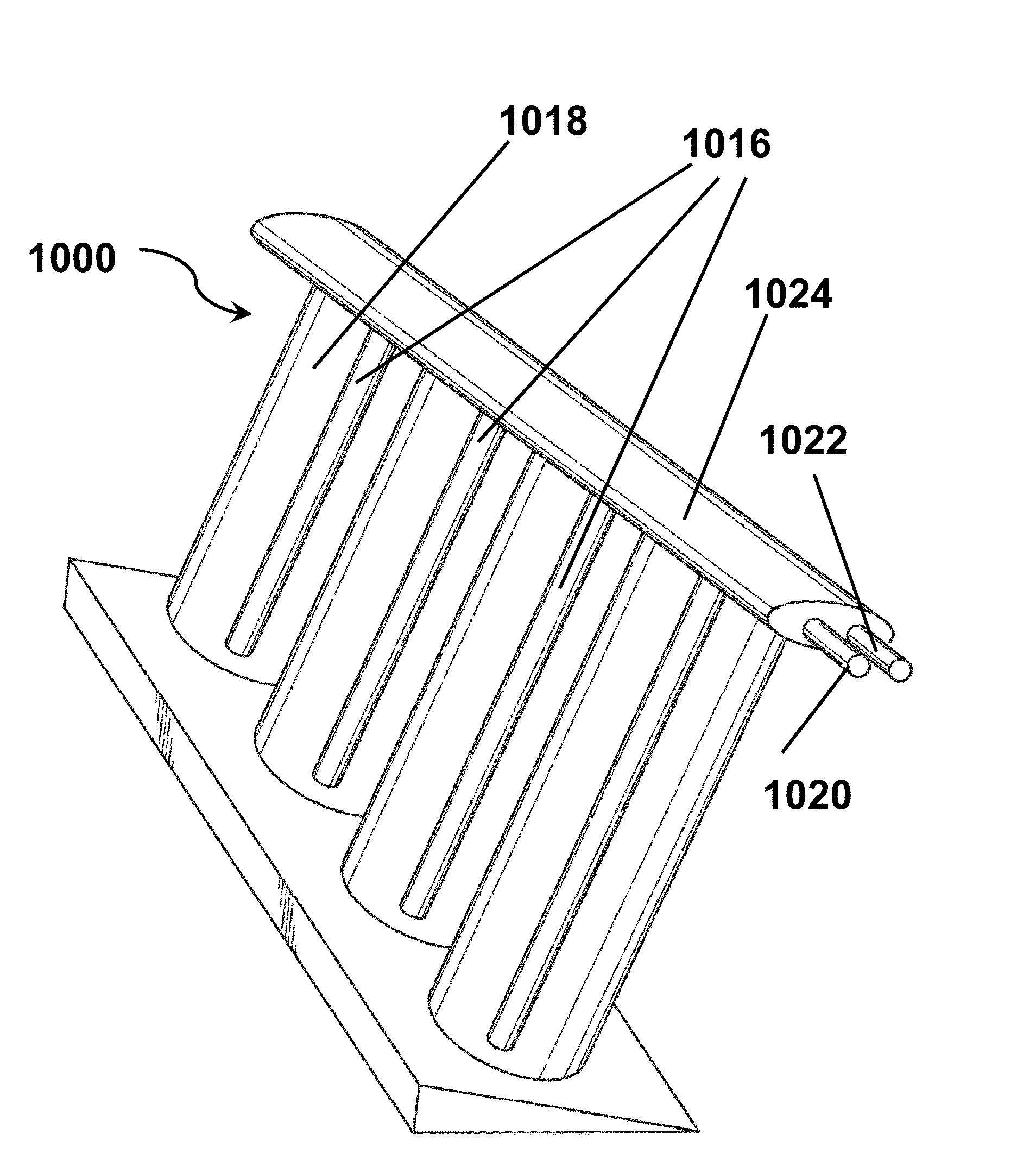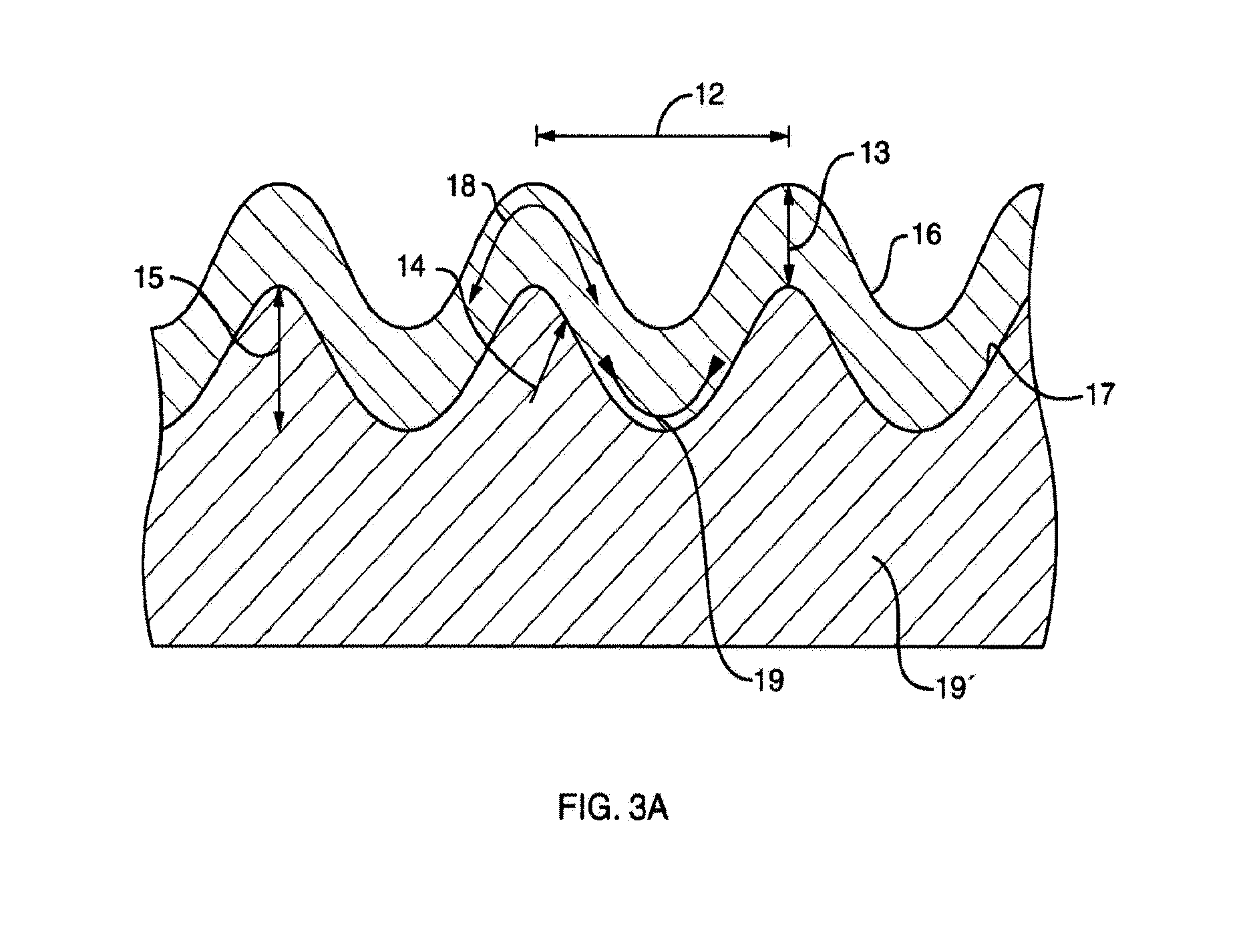Bandgap-shifted semiconductor surface and method for making same, and apparatus for using same
a technology of semiconductor surface and band-gap-shifted semiconductor, which is applied in the direction of catalyst activation/preparation, electrolysis components, physical/chemical process catalysts, etc., can solve the problems of carbon-based energy pollution, high cost, and high cost of carbon-based energy, and achieves high efficiency, better matched, and high stress in titania
- Summary
- Abstract
- Description
- Claims
- Application Information
AI Technical Summary
Benefits of technology
Problems solved by technology
Method used
Image
Examples
example 1
[0312]This Example illustrates the effects of illumination conditions, bias voltage and temperature on the efficiency of hydrogen production and conversion efficiency of an apparatus as shown in FIGS. 16, 17 and 22.
[0313]An apparatus as described above with reference to FIGS. 16, 17 and 22 was subjected to artificial solar illumination conditions of AM 1.5 and AM 0.0, where AM means Air or Atmospheric Mass, the amount of atmosphere through which the sunlight must travel to reach the ground. So, AM 1.5 is typical for sea level conditions, while AM 0.0 is for a “space” application such as orbiting satellites. with the core assembly 186 maintained at either 25 or 80° C. and with varying bias voltages applied between the photoactive anode 226 and the cathode 220. In these tests, the bias voltage was not supplied by the photovoltaic strip 602 (FIG. 22) in order to permit the illumination of the photovoltaic strip and the bias voltage to be controlled independently. FIG. 45A shows the rat...
example 2
[0315]This Example illustrates (see FIG. 46) the effects of bias voltage on conversion efficiency of an apparatus as shown in FIGS. 16, 17 and 22, as a function of the electrolyte composition. The best results, i.e. highest hydrogen production efficiency, are obtained with either an acidic electrolyte or a salt water electrolyte. The basic potassium hydroxide electrolyte performs best at zero voltage bias, but underperforms at higher voltage bias.
[0316]The photoactive titania electrodes of the present invention can be used in any application in which photoactive titania electrodes have hitherto been used, as discussed in detail in the aforementioned parent application.
[0317]In summary, this invention provides for shifting the optical bandgap of a semiconductor into longer optical wavelengths by stressing the semiconductor, where the semiconductor is a thin film, and where the stress is strain caused by some or all of the following: conditions under which the thin film is formed, the...
PUM
| Property | Measurement | Unit |
|---|---|---|
| threshold energy | aaaaa | aaaaa |
| energy gap | aaaaa | aaaaa |
| photoelectrolysis quantum efficiency | aaaaa | aaaaa |
Abstract
Description
Claims
Application Information
 Login to View More
Login to View More - R&D
- Intellectual Property
- Life Sciences
- Materials
- Tech Scout
- Unparalleled Data Quality
- Higher Quality Content
- 60% Fewer Hallucinations
Browse by: Latest US Patents, China's latest patents, Technical Efficacy Thesaurus, Application Domain, Technology Topic, Popular Technical Reports.
© 2025 PatSnap. All rights reserved.Legal|Privacy policy|Modern Slavery Act Transparency Statement|Sitemap|About US| Contact US: help@patsnap.com



